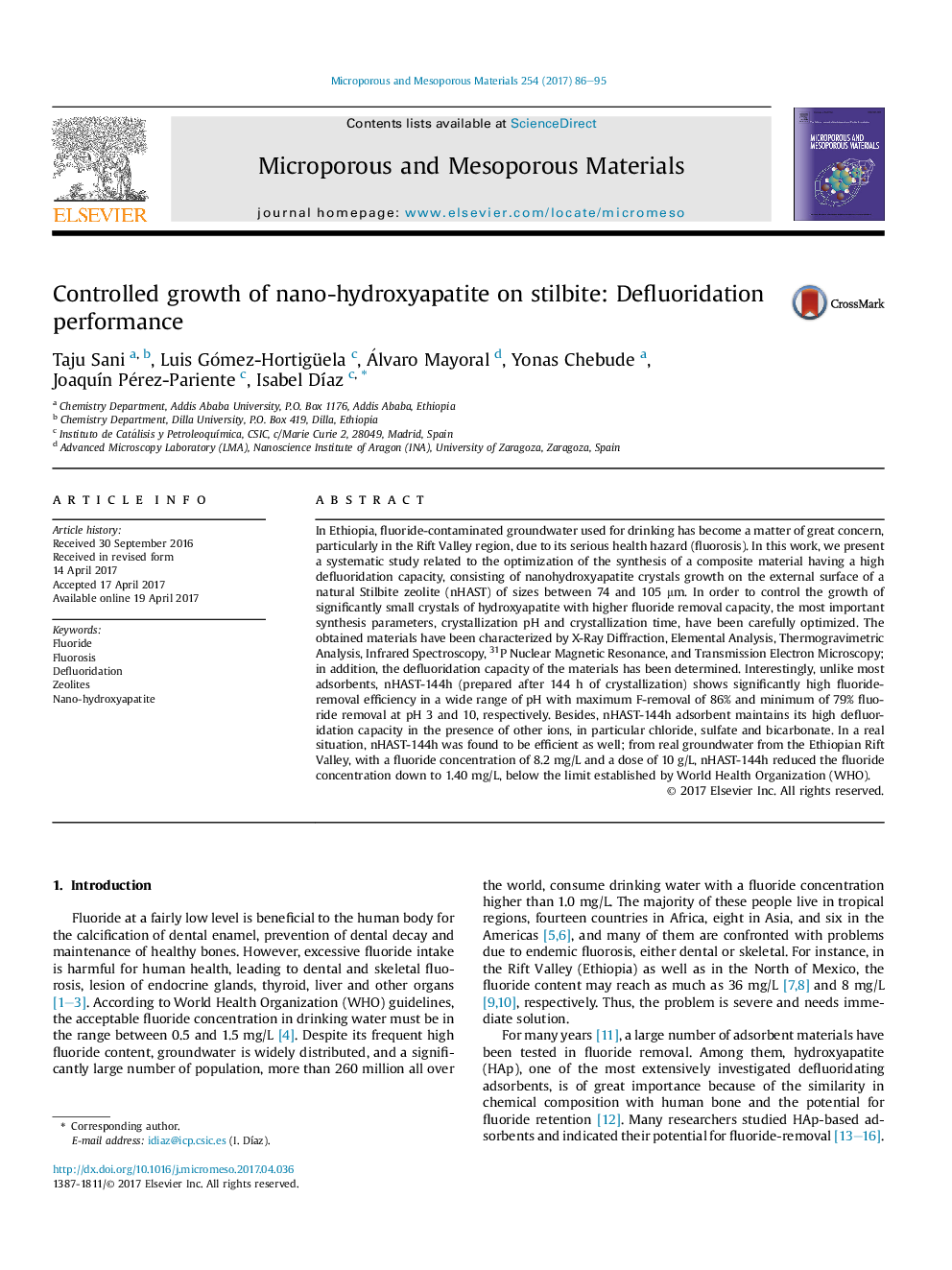| Article ID | Journal | Published Year | Pages | File Type |
|---|---|---|---|---|
| 6456545 | Microporous and Mesoporous Materials | 2017 | 10 Pages |
â¢Optimum growth of nanohydroxyapatite on the external surface of natural Stilbite.â¢Synthesis at autogenous pH 8 and room temperature.â¢High fluoride-removal efficiency in a wide range of pH.â¢Efficient defluoridation from real groundwater from the Ethiopian Rift Valley.
In Ethiopia, fluoride-contaminated groundwater used for drinking has become a matter of great concern, particularly in the Rift Valley region, due to its serious health hazard (fluorosis). In this work, we present a systematic study related to the optimization of the synthesis of a composite material having a high defluoridation capacity, consisting of nanohydroxyapatite crystals growth on the external surface of a natural Stilbite zeolite (nHAST) of sizes between 74 and 105 μm. In order to control the growth of significantly small crystals of hydroxyapatite with higher fluoride removal capacity, the most important synthesis parameters, crystallization pH and crystallization time, have been carefully optimized. The obtained materials have been characterized by X-Ray Diffraction, Elemental Analysis, Thermogravimetric Analysis, Infrared Spectroscopy, 31P Nuclear Magnetic Resonance, and Transmission Electron Microscopy; in addition, the defluoridation capacity of the materials has been determined. Interestingly, unlike most adsorbents, nHAST-144h (prepared after 144 h of crystallization) shows significantly high fluoride-removal efficiency in a wide range of pH with maximum F-removal of 86% and minimum of 79% fluoride removal at pH 3 and 10, respectively. Besides, nHAST-144h adsorbent maintains its high defluoridation capacity in the presence of other ions, in particular chloride, sulfate and bicarbonate. In a real situation, nHAST-144h was found to be efficient as well; from real groundwater from the Ethiopian Rift Valley, with a fluoride concentration of 8.2 mg/L and a dose of 10 g/L, nHAST-144h reduced the fluoride concentration down to 1.40 mg/L, below the limit established by World Health Organization (WHO).
Graphical abstractDownload high-res image (324KB)Download full-size image
